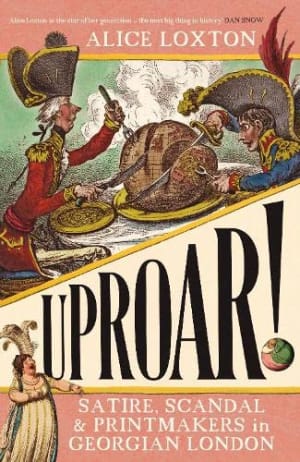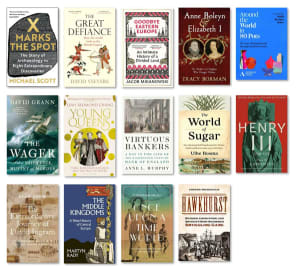Smuggling is a shadowy business, so it is perhaps appropriate that our imaginations are peopled by fictional characters rather than real life historical smugglers.
So as a child I loved the Captain Pugwash books by John Ryan which, if you are not familiar with them, feature the incompetent and cowardly (but loveable) Captain Pugwash. In Pugwash the Smuggler (which you can also watch on YouTube) Captain Pugwash agrees to smuggle brandy barrels from France to England for a shady looking innkeeper. Things don’t quite go to plan but luckily Tom the Cabin boy is able to keep them out of trouble.
But then more recently Maddox Von Ranke recommended to me Jamaica Inn by Daphne Du Maurier, in which smugglers are shown as monsters of pure evil, capable of any despicable act.
Reading Hawkhurst: Murder, Corruption, and Britain’s Most Notorious Smuggling Gang by Joseph Dragovich was a great chance to see how real life 18th Century English smugglers stacked up.
Tea-rifying
It turns out that real smugglers - as exemplified by the Hawkhurst gang - were much more like Du Maurier’s evil monsters than they were Ryan’s cheeky rogues1.
The ultimate source of this evil was tea.
Ubiqui-tea
“By the 1730s” Dragovich tells us, “tea was everywhere. There was a tea for every taste and budget.” What had once been a luxury item had become an everyday staple, consumed in coffeehouses and in the home with a slice of toast for breakfast.
But as the supply of tea improved and the price of tea fell, the tax on the tea stayed the same. So whereas the tax might have been just over 5% of the sale price of tea in the early 1700s, by 1720 falling tea prices meant that the same 4 shilling tax now represented up to 50% of the cost of the tea to the consumer.
Tea-lightful
This was the perfect situation for smugglers who could avoid the tax - tea being lightweight, a small cargo was worth a lot, and because everybody drank it they could offload the stuff anywhere.
Even better: the more tea they could smuggle into England, the lower the price. The lower the price, the higher the percentage of the price made up of tax (that 4 shillings tax per pound of tea didn’t change). And the higher the tax the greater the profit in smuggling.2
A super commidi-tea
Smuggling had been part of life on the coast for as long as there were taxes. But with tea as the new super commodity smuggling gangs could really scale up. By the 1740s it was estimated that an incredible 80% of the tea drunk in England was smuggled in.3
With so much product to transport it became impossible to do it surreptitiously and the larger gangs increasingly used intimidation rather than subterfuge to get their way. Any customs officials that tried to interfere were beaten, kidnapped and sometimes killed.
This is where the Hawkhurst gang comes in.
Tea-off
Dragovich introduces us to the gang with a murder on Christmas day 1740. Thomas Carswell, a customs official, had just found their tea stash. Carswell and his men were removing the tea to their customs HQ when the Hawkhurst gang caught up with them. Fortified with brandy and desperate to get their cha, they charged the customs men, firing as they went. A shot caught Carswell in the head and he fell dead from his horse.
This killing marked the start of a seven year rampage across Kent and Sussex in which the gang progressed from smuggling to robbery to jailbraking, to more murders, to torture, to kidnapping and just about anything they could think of to make a dishonest living.
What’s in the book?
Dragovich does a good job of setting the scene on which the Hawkhurst drama is played out. We get an intro to that novel and exciting beverage: tea. The political scene is laid out, including the nakedly corrupt electioneering, which helped to fuel some of the smuggling gangs as pardons seemed to have been handed out in exchange for votes. And we can hear in the background the tumult of the ‘45, where Scotland rose in favour of Bonnie Prince Charlie, grandson of the deposed James II, and marched down to the midlands before losing their bottle and heading back north.
The foreground is a narrative account of the doings of the Hawkhurst gang as they expanded their operations and transformed themselves into hardened criminals. This is a story about individual people, as Dragovich traces the various gang members like Jeremiah Curteis and Gabriel Tomkins as they turn up in the records.
The end of the gang was presaged by the gruesome torture and double murder of customs official William Galley and potential witness Daniel Chater, which led to the government making - at last - a determined effort to find, prosecute and hang everybody implicated.
Who made the smugglers?
While Hawkhurst is primarily a “true crime” type history there is more to it than that, with plenty of historical context and smatterings of analysis. For example here is Dragovich musing on who is truly to blame for the smuggling epidemic:
It takes a village to raise a child, and it takes a nation to create entrenched, violent organised crime. The people prosecuting these murders had a hand in creating the system that wrought this violence, with electoral gamesmanship and draconian, reactionary laws.
Joseph Dragovich, Hawkhurst
What is it like to read?
Generally speaking this is a pretty easy read. Dragovich does a good job of keeping the chapters short and focussed, and the story moving along at a decent pace.
Overall I would say it is a good solid read rather than a literary masterpiece, with a few jarring sentences spoiling the flow from time to time - the final sentence in the book is a good example which I couldn’t resist including:
The teabags that we nonchalantly put in our mugs every morning are full of deep historical blood.
Joseph Dragovich, Hawkhurst
I did struggle a bit with the names of the different gang members and other assorted individuals as they come in and out of the story - the cast is pretty broad - but I could equally blame myself for not concentrating hard enough.
Conclusion
If you (a) love history and tea, or (b) love reading about historical crime, or (c) love Pugwash but want a more realistic take, I would definitely read this book. If you are merely curious I would also give it a go! Shining a light on a forgotten corner of the story of Britain, reveals that it is full of deep historical tea.
Although they are not quite as bad as the devil worshipping Reverend Francis Davey. ↩︎
This economic logic is slightly suspect but I think the point is that there was money to be made! ↩︎
This was the estimate of a parliamentary committee of the time - of the 4 million lbs of tea consumed in the UK 3.2 million lbs was smuggled. ↩︎
Book details
(back to top)- Title -
Hawkhurst : Murder, Money and Smuggling in Georgian England
- Author -
Joseph Dragovich
- Publication date -
May 2023
- Publisher -
History Press
- Pages -
216
- ISBN 13 -
9780750998895
- Amazon UK -
- Amazon US -



